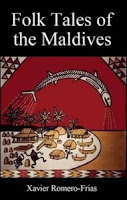Today is Folklore Thursday on social media! If you want to find out more, follow this link, or click on the #FolkloreThursday hashtag on Twitter! Hosted by @FolkloreThursday.
J.K. Rowling released the first part of her
History of Magic in North America series yesterday, and once again threw the Internet into a frenzy - the Potter-fandom was
more excited than a ball pit full of ferrets, while
indigenous activists spoke out about the problematic cultural elements in the story.
(
Yes, that's an actual video of a ball pit full of ferrets. Go ahead, click, I'll wait)
Ever since Harry Potter first became big, people have been miles and miles ahead of Rowling's canon, designing wizarding schools for their own respective countries/cultures. Several
ripoff book series were also published set in very similar "original" magical schools. Harry Potter camps, with their own Schools and Houses, licensed and otherwise, sprung up like mushrooms in an unsanctioned Herbology project.
As a Hungarian person, I have repeatedly been assumed to be an automatic
Durmstrang alumna - mostly because many foreigners can't differentiate between Hungary and Bulgaria. Other than having a generically Eastern European school in our immediate vicinity, Hungary's only claim to fame in the Potterverse so far has been
this badass dragon. (Not as badass as
our actual dragons, but nice try, Rowling). Rowling has been
unveiling new schools in various countries of the Harry Potter universe, but still no Hungary. So I asked myself:
What would a Hungarian wizarding school even look like? And if I had to build one, as a
bona fide Hungarian storyteller and folklore nerd, what would I build it on?
Right off the bat:
There is no way our school would be PG-13.
Looking at Hungarian lore, and following the Potter canon's house-system, the Hungarian school would more likely have 4 very distinct divisions. No sorting, though. And here is why:
Garabonciások
They are wizards who learn their trade. 13 of them form one class, and their education consists of 13 "schools" or stages - at the end of which they have to sit on a Wheel of Fortune, and the first one to fall of inevitably dies. The remaining twelve are granted some serious powers, including the summoning and
riding of dragons. In Rowlingspeak, their specialties would be:
Care of Magical Creatures (or, How to Train Your Dragon)
Apparition (they can use their books to teleport, see the story included in
my book)
Defense Against the Dark Arts (they often break witches' curses)
Flying (dragons and/or books, rather than brooms)
*NOTE:
garabonciás are, technically, not magically inclined until they finish their studies. This means that Hungarian Hogwarts would take Muggles too...*
Táltosok
They are wizards/shamans who are born with their abilities.
Táltos beliefs are held to be the remnants of Hungary's pre-Christian shamanic faith, but they survived well into the 20th century as folklore. The sign of being a
táltos is usually being born with teeth or extra fingers. Specialties:
Divination (they can see the future, as well as find hidden treasures)
Transfiguration (
táltos often turn into bulls and fight each other)
Healing
Boszorkányok
Hungary's folklore is chuck full of witchcraft - it is by far the most popular type of lore we have (what that says about us as a culture is another story). Witches either inherit their powers from a dying witch, or gain them through a series of ritualistic trials (standing at the crossroads at night in a magic circle and resisting all kinds of threatening visions, swallowing a wasp, etc.). Witches can be men or women.
Specialties:
Transfiguration (witches can take on the shape of frogs, ravens, dogs, geese, or cats)
Charms (or curses - witches are both known to heal and curse)
Herbology/Potions
Látók/Tudók
Known as "seers" or "knowers," they are men and women with innate abilities to see things others can't. They can communicate with the spirits of the dead, see into the future, and see things at large geographical distances. Their main activities revolve around healing and divination. Their abilities are mostly innate, although in some cases they can be handed down from a dying seer. Specialties:
Divination
Healing
Charms
Residential ghost wrangling?...
In the Potterverse, they would probably be magically inclined students who are picked out and trained by mentors until they can inherit someone's powers. They would also be the house ghosts' best friends.
The most common
Patronus and Animagus forms in Hungary (based on folktales and legends) would probably be birds of prey (falcons, hawks), deer and stags, horses, and foxes. Magical creatures most likely encountered would be
fairies, dragons,
pet blood-sucking chickens, and the occasional giant or dwarf.
As for the school itself: There are a couple of fitting locations that could serve as a wizarding school. One would be any of the
several castle ruins we have around the country - most of them just stand in the woods with no guides or museums attached. If we wanted to play off of folktales, the castle would be mounted and
spinning on a duck's leg (
kacsalábon forgó vár), which is one of the staple motifs of our fairy tales. It might even have different floors or levels: Copper, Silver, Gold, and Diamond, which is also familiar (celestial) imagery to all people raised on Hungarian stories.
Alternately, the school could also be located in the marshes and waterlands of the Danube known as
Szigetköz, which has a long history of being considered a magical region where the Fairy Queen had her palace. The fairies, lore claims, have left the Earth, so an abandoned fairy castle could easily double as a magic school.
So. Who wants to get an invitation to study at a Hungarian wizarding school (possibly delivered by an owl with a copper ****)?
(As I said. Not PG13.)













